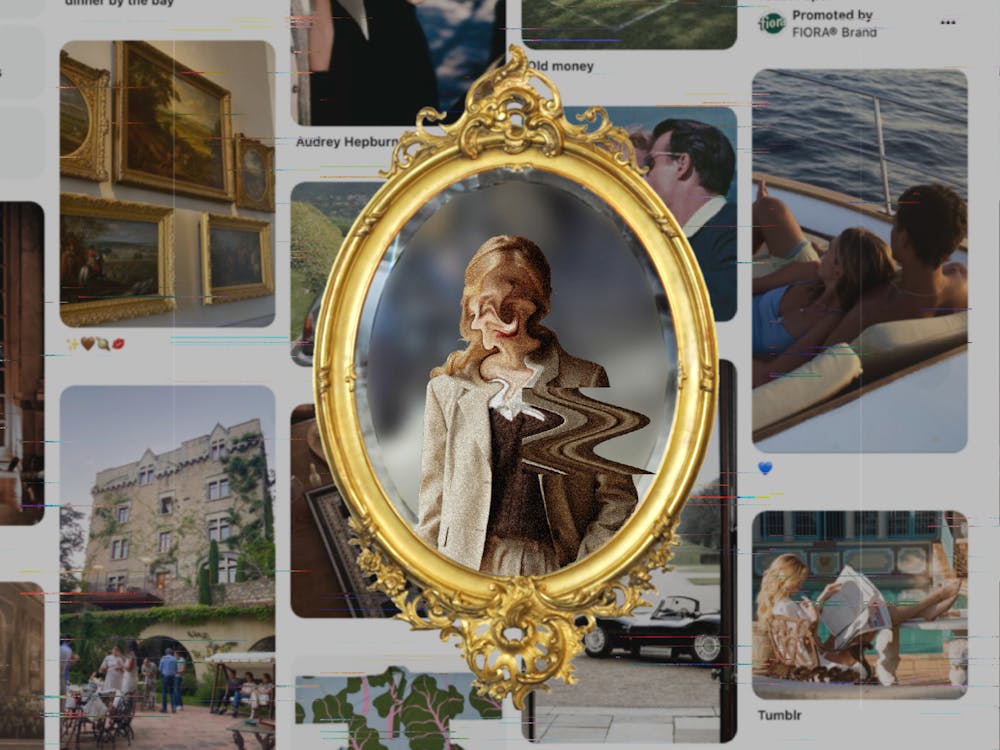From the days of the broad-shouldered financiers who peddled an English drape to the dependable flannels of the power suit, Ivy League campuses have always been hotbeds of the styles associated with the upper class. Originating in Princeton and Yale (sorry guys—we can’t take credit for this one), high society fashion has managed to sneak its way into every decade since the height of its popularity in the ‘50s and ‘60s. Somehow, we forget all about it just in time for the next Nantucket Red-clad man to start the whole damn cycle over again. Here I will be focusing on the newest iteration of the preppy look—the old money style.
Its legacy originates in the collegiate look of the 1930s, which evolved into the Ivy look of the ‘50s and ‘60s. Ralph Lauren carried the style in the ‘80s into the business casual look of the nineties. Think navy blazers with gold buttons, cricket sweaters, gray flannel trousers, Oxford shirting with button down collars, bass weejun penny loafers, and lots and lots of tweed—all of which are style points that have been consistent in every decade of the style.
Even with this legacy, now is a strange time for prep to reemerge. Prep icons George Fraizer and Charlie Davidson are dead. Ralph Lauren has settled into the established position its predecessor Brooks Brothers occupied, and the irrelevant J. Crew has yet to fully find themselves amid financial troubles and creative change. Even the campus shops, the great outfitters and haberdashers specifically catering to generations of Ivy League students, have all gone away. On the home front, our own Harvey Ltd. closed in 2004, now occupied by the Subway off of Thayer St.
Within this realm of uncertainty, it follows suit that old money style operates as the current iteration of prep. In the hands of Instagram and Tiktok influencers, old money is present in everything from promotional stills of The Talented Mr. Ripley to the eclectic locales of Slim Aarons (linen in a vineyard anyone?). If I had to summarize the resurgence of the style, I would say it’s a wealth-worshiping amalgamation of the excesses and aspirations of Ralph Lauren and that I use it for a haircut photo of young FDR Jr. In other words, nonsense.
I still can’t get behind the banal style that the "old money types" abide by. It’s the sheer lack of direction that irks me. On one end you get the tennis blazers (outside of the racket club), madras pants, bit loafers, and rugby shirts. On the other end we have the quiet luxury gang, who seem to be base jumping into the bottomless pit of quarter-zip-over-gingham-shirt-bros and the carrioned remains of the French Ivy aesthetic. There is an ironic lack of taste for a fashion trend dedicated to the lives of those who claim to possess it to the utmost degree.
Beyond the realm of fashion, it would be remiss to ignore that the outcropping of the aesthetic, built up by social media fancams and aspirational clip shows, is almost exclusively white. Not only is it problematic at best to extol the virtues and styles of the wealthy classes in America—the main line dominated by the wealthy white Protestants who excluded anyone who didn’t fit those descriptors—the aesthetic has a complete disregard for the Black style icons who mastered and put their own spin on the “Ivy style” during its heyday in the ‘60s. Miles Davis, who George Frazier named “the warlord of the weejuns,” was perhaps the most stylish man in America during his prime and is completely ignored by the proponents of old money style. We can also count giants like John Coltrane, James Baldwin, and Sidney Potier among those who made a style tied to the white wealthy class of America their own. There is minimal mention or reference to any of these icons in mainstream old money media, and little representation available in short clippings of Polo Ralph Lauren ads. The old money style we see today celebrates the rich and powerful aesthetic, without critically analyzing social inequality in America and disregarding non-white contributors to the Ivy and preppy style.
For those of you who still desire to adhere to these ideations of wealth and power, here’s what it takes: An assortment of bespoke suits from your tailor, preferably from the old boys on Savile Row: Anderson and Sheppard, H. Huntsman and Sons, Steed, Gieves and Hawkes, etc. Make sure you have an ample quantity for business and for country wear, in addition to commissioning your odd jackets and trousers for sporting clothes as well as overcoats, evening wear, and morning dress for more formal occasions. This should cost you a semester or two of tuition. Lastly, a subscription to your local public library, so you can pick up a history book and begin to think critically about mindlessly supporting the wealthy classes for once! I’ll see you at the racket club, old boy!





